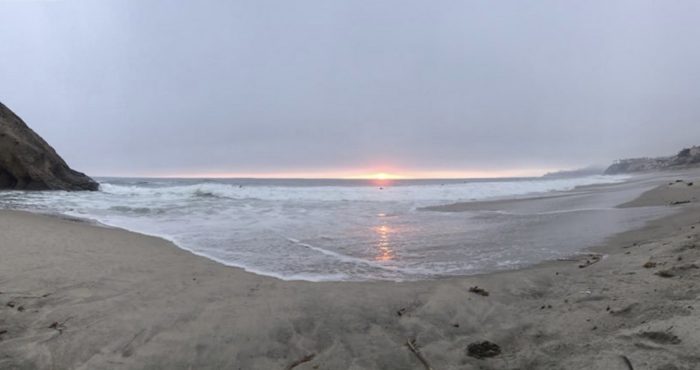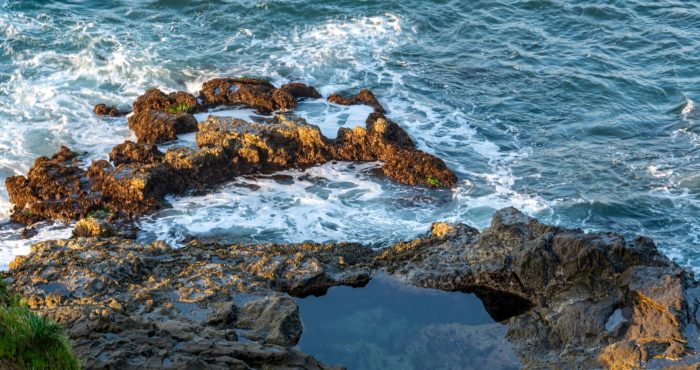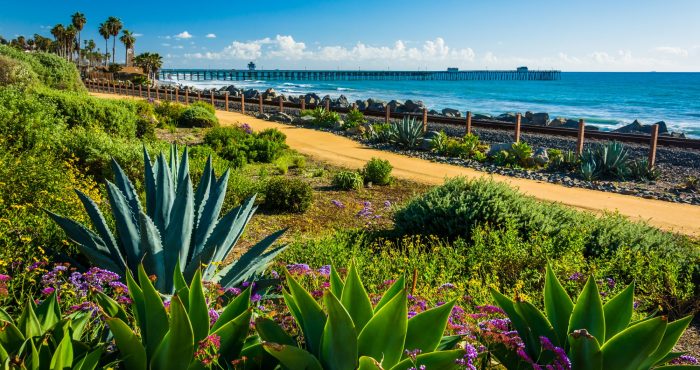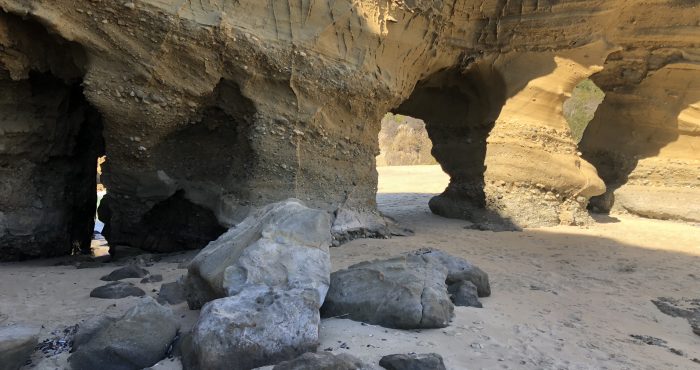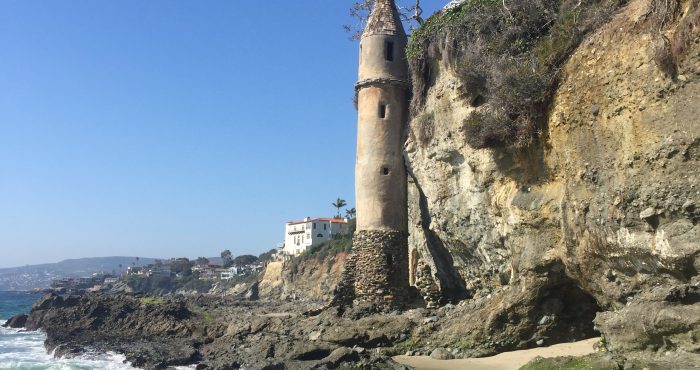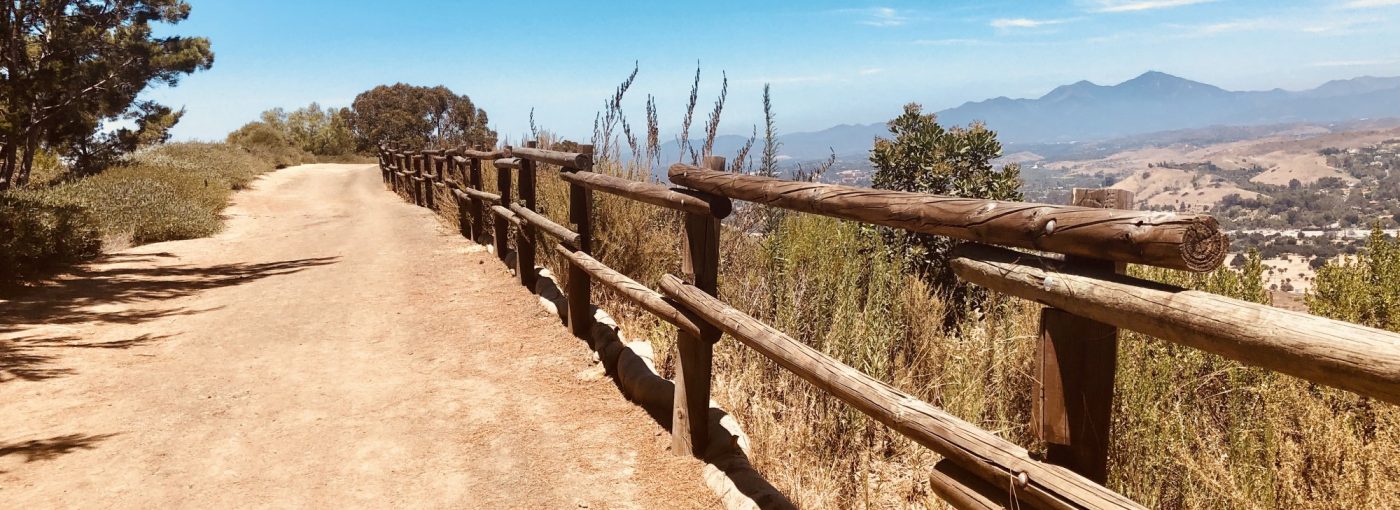
Laguna Niguel, CA Real Estate
You found the right website if you are searching for homes for sale in Laguna Niguel, CA. My website has EVERY Laguna Niguel home for sale in California listed with California Regional Multiple Listing Service, Inc. (CRMLS).
Laguna Niguel (/ləˈɡuːnə nɪˈɡɛl/) is a suburban city in Orange County, California in the United States. The name Laguna Niguel is derived from the words “Laguna” (Spanish for “lagoon”) and “Niguili” (the name of a Native American village once located near Aliso Creek). As of the 2010 census, the population was 62,979.
Laguna Niguel is located in the San Joaquin Hills in the southeastern corner of Orange County, close to the Pacific Ocean, and borders the cities of Aliso Viejo, Dana Point, Laguna Beach, Laguna Hills, Mission Viejo, and San Juan Capistrano. Laguna Niguel has a median household income 31 percent above the Orange County average and nearly double the U.S. average. It is known for its mild coastal climate, low crime rate, and its numerous parks and public trails.
Living in Laguna Niguel
Laguna Niguel has its origins in the Rancho Niguel Mexican land grant, which was acquired in 1959 by the Laguna Niguel Corporation to develop one of California’s first master-planned communities. As a predominantly residential city, Laguna Niguel serves as a bedroom community for the job centers of northern and central Orange County.
History
Early inhabitants and settlers
The first recorded inhabitants of the Laguna Niguel area were the Acjachemem Native Americans, who may have had a village called “Niguili” near the confluence of Aliso Creek and Sulphur Creek. Aliso Creek marked the boundary between the Acjachemem and Tongva people. In the 1700s, during the Spanish colonization of the Americas, Spanish missionaries established the nearby Mission San Juan Capistrano to convert the Acjachemem (called the Juañeno by the Spanish) to Christianity. The Mission lands, which included the present-day boundaries of Laguna Niguel, were divided into private land grants in 1821 upon Mexico’s independence from Spain.
In 1842, the 13,316-acre (5,389 ha) Rancho Niguel was granted to Juan Avila; he retained ownership of the land through the Mexican–American War (when California became part of the United States) until 1865, when a severe drought forced him into bankruptcy. In 1895 Lewis Moulton and Jean Pierre Daguerre bought the Rancho Niguel and other portions of the surrounding area from farmers who were struggling due to persistent drought conditions. The Moulton Company was established to oversee 19,000 acres (7,700 ha) of local land which was used, mainly for orchards and sheep ranching, well into the mid-20th century. In 1951 the land was divided between the Moulton and Daguerre families, the latter inheriting 8,056 acres (3,260 ha) in the future location of Laguna Niguel. In 1954 the Daguerres sold 7,200 acres (2,900 ha) to the Shumaker Group and 856 acres (346 ha) of oceanfront to George Capron, a former Major League Baseball player who established the Capron Ranch.
Laguna Niguel Corporation
The completion of Interstate 5 in 1959 enabled easy access to job centers in Los Angeles County, creating a boom in the Orange County housing market. In 1959, Cabot, Cabot & Forbes and Paine Webber partnered to form the Laguna Niguel Corporation, which purchased the Daguerre land to develop one of California’s first master planned communities. The initial 7,100-acre (2,900 ha) town plan was created by Viennese architect Victor Gruen and expanded beginning in 1971 by AVCO Community Developers after they acquired the Laguna Niguel Corporation. The name of the city was created from “Laguna”, a reference to the tidal lagoon that once formed at the mouth of Aliso Creek, and the name of the Acjachemem village Niguili that once occupied the area. As the city would be developed in stages, ranchers and farmers signed annual leases with the Laguna Niguel Corporation to use the land until the planned communities were built.
In contrast to a traditional bedroom community, Laguna Niguel was designed so that “families should have most of their economic needs and their social and cultural interests met by facilities within the community”. The plan was also notable for its emphasis on parks and open space – comprising nearly a third of the land to be developed. The Laguna Niguel Corporation went public in April 1959 and raised an initial $8.2 million from investors. In 1962 the first tracts of Monarch Bay and Niguel Terrace were completed, consisting of 565 homes. In 1960, the Moulton Niguel Water District (which today serves all of Laguna Niguel) was established by a conglomerate of ranchers, to import water from the Colorado River Aqueduct as the area lacked a sufficient natural water supply. In 1964, Crown Valley Parkway was completed from I-5 to the Pacific Coast Highway, facilitating transport through the growing city. By 1965 the population of Laguna Niguel reached 1,000.
The Laguna Niguel Homeowner’s Association was formed in 1966 as an advisory to the Orange County Board of Supervisors (which governed the as-yet unincorporated city). In 1973 Laguna Niguel Regional Park opened to the public. The Chet Holifield Federal Building (a local landmark popularly known as the “Ziggurat”), designed by William L. Pereira, was constructed for Rockwell International and was meant to bring 7,000 jobs to the area. After the end of the Vietnam War, Rockwell reportedly lost a defense contract with the federal government and the building was left unoccupied. It was eventually traded to the US General Services Administration in exchange for industrial facilities elsewhere.
The Ziggurat, which was completed in 1971 well before the development of residential communities in the area, is one of Laguna Niguel’s most noticeable landmarks. The Orange County Register described it as “the only constant in an ever developing locale.” It houses millions of microfilms as documents of land agreements between the American government and Native American tribes of the southwest United States. It is also home to the Western Regional Department of Homeland Security and the California Service Center of the United States Citizenship and Immigration Services. The building was featured in an ending scene for the 1975 sci-fi movie Death Race 2000 and as the headquarters for the Luckup Corporation in the 1983 movie Deal of the Century. It was also used for the 1995 movie Outbreak, where it served as the exterior for the Center for Disease Control headquarters.
Incorporation and conflict with Dana Point
In 1965 the Laguna Niguel Corporation had purchased George Capron’s oceanfront property and began to develop the Niguel Shores neighborhood, known in its early days as the “Coastal Strip” and today as Monarch Beach. By the 1970s the as-yet unincorporated Dana Point began expressing interest in annexing the Niguel Shores area; in 1977 Dana Point briefly proposed incorporation with Laguna Niguel as a single city. Both cities submitted incorporation requests in December 1986, when a controversy immediately erupted over the coastal Monarch Beach community. Although Monarch Beach had been developed by the Laguna Niguel Corporation, its residents voted 61 percent in favor of joining with Dana Point. Laguna Niguel filed a lawsuit, which was ultimately turned down by a judge. Laguna Niguel was formally incorporated on December 1, 1989, without the coastal strip, as Orange County’s 29th city.
Recent history
The population increased quickly during the last few decades of the 20th century, from 12,237 in 1980 to 61,891 in 2000. Growth since 2000 has been slower, with an estimate of 65,806 in 2015, due to the fact that the city has been fully built out. In 1992, Alicia Parkway was completed to I-5, providing a shorter route for northbound commuters; in 1996 the 73 San Joaquin Hills toll road opened, linking Laguna Niguel to the Interstate 405 in Costa Mesa. The Laguna Niguel City Hall, which had been planned as early as 1989, finally opened on October 15, 2011.
In 1994 local residents first noticed damage to retaining walls and roads near an artificial slope in the Niguel Summit community, and geologists warned that the area could be subject to a landslide. After heavy rains caused by the 1997–98 Super El Niño, the hill collapsed on March 19, 1998, destroying four homes at the top and five condominium units at the bottom. Fortuitously, there were no deaths as the area had been evacuated only a few hours prior to the collapse. An investigation revealed that the company responsible for development, J.M. Peters Inc., had improperly packed and graded the 275,000 tons of fill supporting the Niguel Summit homes. In addition, the project had been plagued by instability throughout its construction, and halted repeatedly “after complaints of mudslides, slope washouts, erosion and dust.” The Los Angeles Times reported that “according to county records, the developers were warned that building on “ancient landslides” could be unsafe, but they were able to continue construction after producing their own geological report that persuaded county officials to let the project go forward.”
Infrastructure
Emergency services
Laguna Niguel is protected by Orange County Fire Authority with ambulance services provided by Care Ambulance Service. Police services are provided by Orange County Sheriff. Although there are no hospitals in Laguna Niguel proper, nearby hospitals include Mission Hospital, Saddleback Memorial Hospital and South Coast Medical Center.
Utilities
Electricity in Laguna Niguel is provided by Southern California Edison and San Diego Gas & Electric. Water is provided by the Moulton Niguel Water District, which is supplied by the Metropolitan Water District of Southern California’s Colorado River Aqueduct and the State Water Project. Gas is supplied by San Diego Gas & Electric and The Gas Company. Waste management is provided by CR&R (Solag Disposal).
Transportation
Roads
Laguna Niguel is served by Interstate 5 on the northeastern border, and the State Route 73 tollroad which runs along the northern border. The Pacific Coast Highway (PCH) is located just outside the southern boundary of the city. Within the city, neighborhoods are connected by a network of 4- to 6-lane arterial roadways with timed intersections. The main thoroughfare is Crown Valley Parkway, which bisects Laguna Niguel roughly from southwest to northeast, linking the PCH in Dana Point to I-5 in Mission Viejo. The other main roads are Alicia Parkway, Niguel Road, La Paz Road, and Moulton Parkway/Golden Lantern north-south), and Aliso Creek Road, Marina Hills Drive and Camino del Avion (east-west). Due to the hilly local geography, Laguna Niguel’s streets are not arranged in a grid pattern.
Buses
The Orange County Transportation Authority (OCTA) operates the 85, 87, 187 and 490 bus routes in Laguna Niguel. The 490 bus line provides connecting service to the Metrolink train station.
Rail
The Laguna Niguel/Mission Viejo station near I-5 is served by the Orange County Line and Inland Empire-Orange County Line of Metrolink commuter rail, providing service to points in Los Angeles, Riverside, San Bernardino and San Diego Counties. The Amtrak Pacific Surfliner served Laguna Niguel from 2007 to 2012, but has since ceased to stop here. Amtrak continues to serve the nearby Irvine and San Juan Capistrano stations.
Bicycling
Most major arterial roads in Laguna Niguel are marked with bike lanes. There are about 60 miles (97 km) of such lanes in the city. There are also several dedicated bikeways which link Laguna Niguel’s extensive public park system (see #Parks and open space).
Parks and open space
Laguna Niguel is known throughout Orange County for its extensive park and trail system. Over one-third of Laguna Niguel is public open space, a legacy of the original 1959 Gruen plan, and is divided between 31 city parks and 4 county parks. Laguna Niguel’s major roads are designated as “scenic highways” within landscape corridors, which includes parks, decorative medians, and grade-separated recreational paths. The 227-acre (92 ha) Laguna Niguel Regional Park is centrally located and includes an extensive trail network, ball courts and Laguna Niguel Lake, a popular fishing and boating venue. Crown Valley Park, visited by about 240,000 people per year, has the city’s main public sports facilities. Aliso and Wood Canyons Wilderness Park, which borders Laguna Niguel on the west, consists of over 4,000 acres (1,600 ha) of canyons, grasslands and riparian forests along Aliso Creek. Aliso and Wood Canyons is part of the larger South Coast Wilderness, 22,000 acres (8,900 ha) of preserved open space in the San Joaquin Hills that also includes the larger Laguna Coast Wilderness Park and Crystal Cove State Park outside the city limits. The interconnected city and regional park systems provide a significant refuge for wildlife in an area of Orange County otherwise filled with suburban sprawl.
There are about 80 miles (130 km) of non-motorized trails in Laguna Niguel for hiking, biking and horseback riding. Major hiking trails include the Aliso Summit trail, which hugs the rim of Aliso Canyon on the western edge of Laguna Niguel, and the Colinas Bluff Trail on the eastern border, overlooking San Juan Capistrano. The Laguna Ridge Trail passes through Badlands County Park, which exposes the namesake geological formations, and approaches the summit of Niguel Hill, the highest point in the city. The paved Salt Creek Trail, a popular Class I bikeway, follows Salt Creek and Niguel Road from Dana Point to Laguna Niguel Regional Park. The Aliso Creek and Oso Creek trails are mostly outside Laguna Niguel, but link the city via greenbelts to other parts of south Orange County. The Aliso Creek Trail is also known as the “Forest to the Sea Trail”, as it is planned to connect the Santa Ana Mountains in the Cleveland National Forest to the Pacific Ocean at Laguna Beach.
Climate
Like much of coastal Southern California, Laguna Niguel has pleasant weather year-round. On average, August is the hottest month and December the coolest. The highest recorded temperature was 108 °F (42 °C), which occurred in 1963, and the lowest temperature was 21 °F (−6 °C), which was recorded in 1949. Precipitation is sparse in Laguna Niguel, as only five months out of the year receive rainfall greater than one inch, with an annual average of 14.2 inches (360 mm). The highest monthly rainfall on average occurs in February and is 3.4 inches (86 mm).
Neighborhoods
Laguna Niguel is home to many upscale neighborhoods including Bear Brand Ranch, El Niguel Heights and Golf Course, Ocean Ranch, Laguna Crest, Laguna Sur. Coronado Pointe, South Peak, Crest de Ville, Niguel Coast, Palmilla, Beacon Hill, and Monarch Point, which offer city, canyon, and ocean views. Other key neighborhoods include Rancho Niguel, Marina Hills, Niguel West, Niguel Summit, Kite Hill, and San Joaquin Hills.
Economy
As a bedroom community, most residents commute outside of Laguna Niguel to central and north Orange County cities, such as Irvine and Newport Beach. Most jobs within Laguna Niguel are in the service industry.
Laguna Niguel Schools
Buying a Laguna Niguel Home
If you are a Laguna Niguel, CA home buyer, my foremost goal is to provide you with exceptional customer service. My goals are to help you purchase the right home, make sure you don’t miss out on any homes that meet your needs, and make sure you don’t pay too much for your next home. Please utilize my Laguna Niguel, California real estate expertise to make your home search and buying experience as stress free and rewarding for you and your family as possible.
Selling Your Laguna Niguel Home
If you're considering selling your Laguna Niguel, California home, I utilize the latest, cutting-edge, real estate marketing tools to expose your property to the widest range of potential buyers. I am here to get your house aggressively marketed to sell as quickly as possible and for the best price! My goals are to help you get your Laguna Niguel, CA home sold, put you in the strongest negotiating position as possible, and to make it easier for you and reduce surprises.
Hot Laguna Niguel Properties
 $2,780,000
Active Under Contract
$2,780,000
Active Under Contract
32211 E Nine Laguna Niguel, California
4 Beds 5 Baths 3,800 Sq Ft
Listed by: Nick Nguyen, DRE #01364249 from Prism Link Properties 949-374-3957
 $2,500,000
Active
$2,500,000
Active
14 Siena Laguna Niguel, California
3 Beds 3 Baths 2,379 Sq Ft
Listed by: Heather Atkins, DRE #02013988 from Surterre Properties Inc 949-212-1128
 $2,485,800
Active Under Contract
$2,485,800
Active Under Contract
23982 Cormorant Lane Laguna Niguel, California
4 Beds 3 Baths 3,283 Sq Ft
Listed by: Stephanie DeWames, DRE #01434732 from Douglas Elliman of California 949-315-5424
 $2,300,000
Active
$2,300,000
Active
16 Dorchester Green Laguna Niguel, California
3 Beds 4 Baths 2,841 Sq Ft
Listed by: Sara Jane McCartan, DRE #01336756 from Berkshire Hathaway HomeService sara@saramccartan.com
 $2,099,900
Active
$2,099,900
Active
29162 Bobolink Drive Laguna Niguel, California
5 Beds 3 Baths 3,336 Sq Ft
Listed by: Cora Berkery, DRE #01415774 from Coldwell Banker Realty 949-285-1984
 $1,995,000
Active
$1,995,000
Active
29435 Ana Maria Lane Laguna Niguel, California
5 Beds 4 Baths 3,212 Sq Ft
Listed by: Kevin Aaronson, DRE #01259966 from Keller Williams Realty info@previewochomes.com
 $1,975,000
Active
$1,975,000
Active
24192 Las Naranjas Drive Laguna Niguel, California
2 Beds 3 Baths 2,686 Sq Ft
Listed by: Kevin Shuler, DRE #01953088 from Keller Williams Realty 949 633-6668
 $1,800,000
Active
$1,800,000
Active
24092 Lapwing Lane Laguna Niguel, California
4 Beds 3 Baths 2,586 Sq Ft
Listed by: Jennifer Elia, DRE #01854968 from Redfin 877-973-3346
 $1,795,000
Active
$1,795,000
Active
3 Nice 25 Laguna Niguel, California
2 Beds 4 Baths 2,337 Sq Ft
Listed by: Simon Guy, DRE #01831954 from Keller Williams OC Coastal Realty 949-835-4713
 $1,699,000
Active
$1,699,000
Active
29662 Quigley Dr Laguna Niguel, California
4 Beds 3 Baths 1,600 Sq Ft
Listed by: Neda Alimoradian, DRE #02191067 from Compass 949-741-0003
 $1,599,000
Active
$1,599,000
Active
41 Baroness Lane Laguna Niguel, California
4 Beds 3 Baths 2,039 Sq Ft
Listed by: Elena Nelson, DRE #01956216 from Select California Homes elenapolanco1976@gmail.com
 $1,599,000
Active
$1,599,000
Active
29476 Christiana Way Laguna Niguel, California
2 Beds 3 Baths 1,473 Sq Ft
Listed by: Dawn Leibovitz, DRE #01397733 from Compass 323-605-4068

